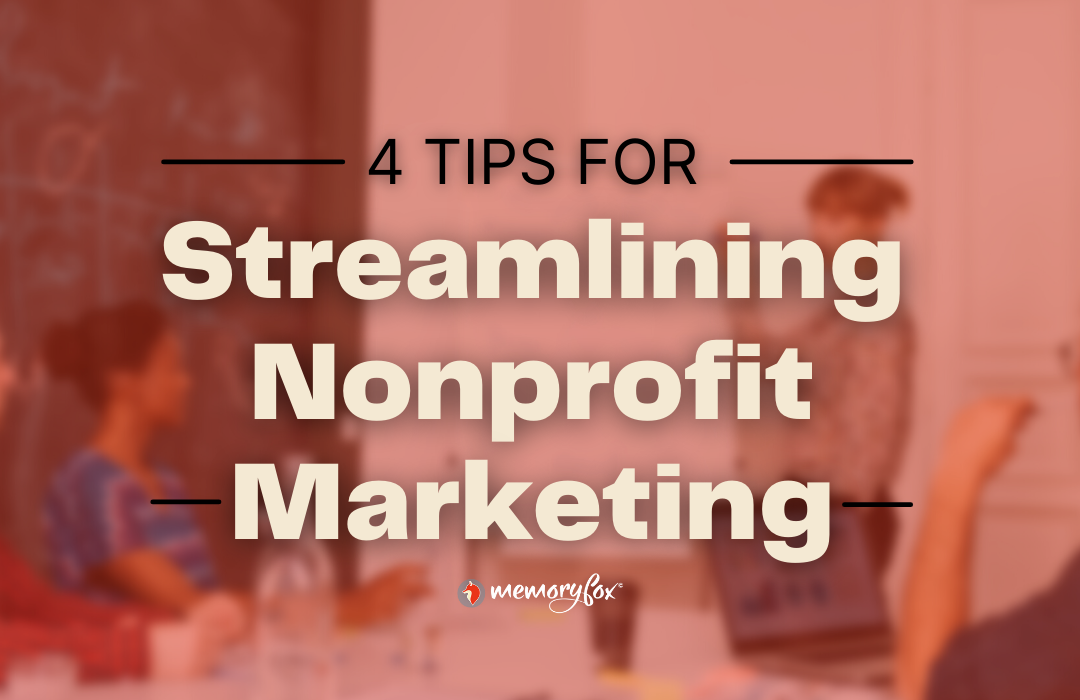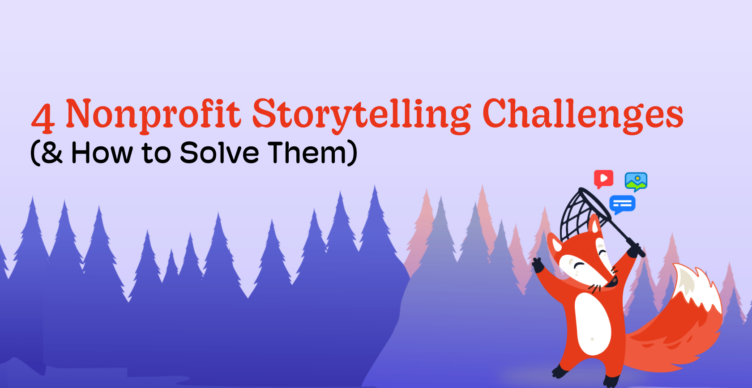4 Tips for Streamlining Nonprofit Marketing

Nonprofit marketing can seem intimidating. Are you one of the many people who work in a nonprofit organization whose job includes some marketing projects, but you’re not a marketer? Maybe your position is more focused on donations and philanthropy, but you also have to wear the marketing hat to promote your organization, showcase your services, and demonstrate the impact that you have on your community. When you’re juggling so many different functional roles, it can be difficult to achieve the ultimate goal of nonprofit marketing: have it take on a life of its own and work for you.
If you’re not trained in marketing, this may seem like a daunting task. You may be resorting to pushing content for the sake of content. The best and most effective marketing, for both nonprofits and for-profit businesses, has some underlying strategy to drive marketing decisions. However, this might be difficult to conceive and implement if you are wearing many different hats for your various functional roles.
To help streamline your nonprofit marketing process and decisions, and to help you shift your focus to your primary functional role, we’ve created a guide with four simple tips to streamline your process and effectively market your nonprofit organization.
1. Set Your Nonprofit Marketing Goals
Your goals will drive your entire marketing operation. If this is done right, and is specific, your marketing collateral can even take on a life of its own online and organically start extending your community reach, bringing in volunteers, and soliciting donations without you even having to do the heavy lifting.
The key for your goals is to make them specific, measurable, actionable, relevant, and time-bound (SMART goals!). Given the wide variety of organizational goals that you may have in terms of fundraising and community impact, your marketing goals may be extensive as well. To make things easier on you, we recommend segmenting your organizational goals by function, and then drilling down on those goals to turn them into specific marketing goals for KPI’s.
Here’s an example of an organizational goal turned into a marketing goal:
Organizational Goal
Solicit 100 new donors per quarter
Nonprofit Marketing Goal
Increase awareness of the impact of organization’s donations and services
SMART Goal KPI’s
Generate 10 new email sign-ups per month, increase social media following by 100 accounts by the end of the month, increase the social media engagement rate by 5% by the end of the quarter
By phrasing the marketing goal as a means to achieve the organizational goal, it makes it easier to determine specific KPI’s and actionable steps that can provide direction for key marketing decisions.
2. Determine Your Target Markets
From your nonprofit marketing goals that you set above, you now have to determine your target market or markets. Depending on your organization’s size and services, you will likely have more than one target market for your nonprofit marketing goals. Before you start churning out content across social media platforms and email campaigns, you need to know who you’re trying to talk to so that you can tailor your messaging to them.
- Ask yourself questions about the people who meet your ideal audience for each of your goals listed above:
- What is the actionable step you want this group to take as a result of your nonprofit marketing? (I.e., the goal that you have listed above)
- Approximately how old is this group of people?
- Are they predominately men or women? Or is this goal not gender-specific?
- What is their household income level?
- Do they have children or dependents?
- What is the best way to reach this group?
- What kinds of content would grab their attention?
Streamline Tip
You probably have a lot of this work done through your philanthropic work! If you don’t have donors and donation management under your functional role, talk to the person who does to find the answers that fit these profiles.
3. Tailor Your Nonprofit Marketing into Segmented Strategies and Channels
Since you will likely have different groups from step 2 to achieve the goals you set in step 1, you will need separate communication strategies to reach your target audiences. First, begin with your marketing platforms that you regularly use or have at your disposal, such as emails, newsletters, and social media channels. Then analyze your target audiences and nonprofit marketing goals to determine where each group can be best reached (even if it is across more than one communication line!). Be sure to divide your email lists as well; you don’t want to send the same email campaigns to volunteers that you do for donors who regularly give in large quantities.
Next, evaluate your social media channels in comparison with your target audiences. Not all social media platforms are the same, and to use them effectively you should tailor your content to the function and benefits of each channel. If the benefits and functions of the channel align with your KPI’s for your specified goals, then you can begin to strategize your content. Additionally, it might be helpful to research where your target audiences live online so that you can utilize the best platforms to reach them!
To achieve the best possible results, track your KPI’s and test slightly different content in the form of A/B testing. For example, you can test out different subject lines or preview texts for emails in two nearly identical lists in your target audience, and from there track your metrics and see which generates the highest open rates. Frequently assessing the results of your nonprofit marketing initiatives will help take the guesswork out of your day-to-day operations, and therefore shorten the process of creating effective.
Streamline Tip
Sign up for a free social media scheduling service to help take some work off of your plate. Prescheduling social media posts means that you don’t have to manually manage social media every single day, giving you extra time each day to focus on your other functional goals. Here’s a list of the best free social media scheduling tools to get you started.
4. Update Your Nonprofit’s Website
A key part of building a trustworthy presence online is creating a website that showcases your organization’s history and mission, the impact that you have on the community, the efforts of your volunteers, and ways to get involved through either donations or volunteering. Additionally, links to your social channels as well as any upcoming events, fundraising campaigns, or news coverage should all be included on your website. Having a catch-all website serves as your nonprofit marketing “home base” on the internet; most people who discover your organization and are interested in learning more will almost certainly search for your website. Once you have updated your website to be cohesive with the rest of your marketing collateral, you will only have to have minor updates for events, campaigns, and news releases as needed, thus streamlining your process even further!
Building a nonprofit marketing presence that can take on a life of its own and effectively reach your target audiences will not only lighten your cross-functional workload, but also help your organization reach its goals. With a little prep work to set your goals and provide clear direction, marketing can be an asset to your everyday work and goals, rather than it being a hinderance on your already-overflowing plate.
Want more tips and guides like this sent straight to your inbox? Sign up for MemoryFox‘s monthly newsletter!




